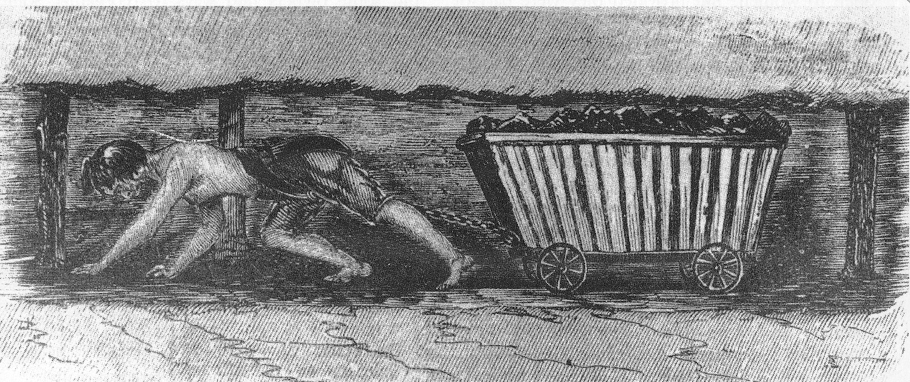The New Sexual Division of Labor
With the restriction of child labor and the collapse of the family work pattern in the 1830s came a new sexual division of labor. By 1850, the man was emerging as the family’s primary wage earner, while the married woman found only limited job opportunities. Generally denied good jobs at high wages in the growing urban economy, wives were expected to concentrate on their duties at home.
This new pattern of separate spheres had several aspects. First, all studies agree that married women from the working classes were much less likely to work full-time for wages outside the house after the first child arrived. Second, when married women did work for wages outside the house, they usually came from the poorest families, where the husbands were poorly paid, sick, unemployed, or missing. Third, these poor married or widowed women were joined by legions of young unmarried women, who worked full-time but only in certain jobs, of which textile factory work, laundering, and domestic service were particularly important. Fourth, all women were generally confined to low-paying, dead-end jobs. Evolving gradually, but largely in place by 1850, the new sexual division of labor constituted a major development in the history of women and of the family.
Several factors combined to create this new sexual division of labor. First, the new and unfamiliar discipline of the clock and the machine was especially hard on married women of the laboring classes. Relentless factory discipline conflicted with child care in a way that labor on the farm or in the cottage had not.
Second, running a household in conditions of primitive urban poverty was an extremely demanding job in its own right. There were no supermarkets or public transportation. Shopping, washing clothes, and feeding the family constituted a never-ending challenge. Thus many women might well have accepted the emerging division of labor as the best available strategy for family survival in the industrializing society.4
Third, to a large degree the young, generally unmarried women who did work for wages outside the home were segregated from men and confined to certain “women’s jobs” because the new sexual division of labor replicated long-standing patterns of gender segregation and inequality. In the preindustrial economy, a small sector of the labor market had always been defined as “women’s work,” especially tasks involving needlework, spinning, food preparation, and child care. This traditional sexual division of labor took on new overtones, however, in response to the factory system. The growth of factories and mines brought unheard-of opportunities for girls and boys to mix on the job, free of familial supervision. Such opportunities led to more unplanned pregnancies and fueled the illegitimacy explosion that had begun in the late eighteenth century and that gathered force until at least 1850. Thus segregation of jobs by gender was partly an effort by older people to control the sexuality of working-class youths.
Investigations into the British coal industry before 1842 provide a graphic example of this concern. The middle-class men leading the inquiry professed horror at the sight of girls and women working without shirts, which was a common practice because of the heat, and they quickly assumed the prevalence of licentious sex with the male miners, who also wore very little clothing. In fact, many girls and married women worked for related males in a family unit that provided considerable protection and restraint. Yet many witnesses from the working class also believed that the mines were inappropriate and dangerous places for women and girls. Some miners stressed particularly the danger of sexual aggression for girls working past puberty. The Mines Act of 1842 prohibited underground work for all women and girls as well as for boys under the age of ten.

Child LaborerThis illustration of a girl dragging a coal wagon was one of several that shocked the public and contributed to the Mines Act of 1842. (© The British Library Board B.S. Ref 18, vol. 17, 65)
A final factor encouraging working-class women to withdraw from paid labor was the domestic ideals emanating from middle-class women, who had largely embraced the “separate spheres” ideology. Middle-class reformers published tracts and formed societies to urge poor women to devote more care and attention to their homes and families.
How did work evolve during the Industrial Revolution? How did daily life change for working people?
